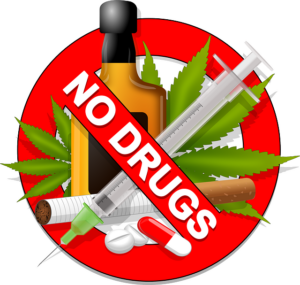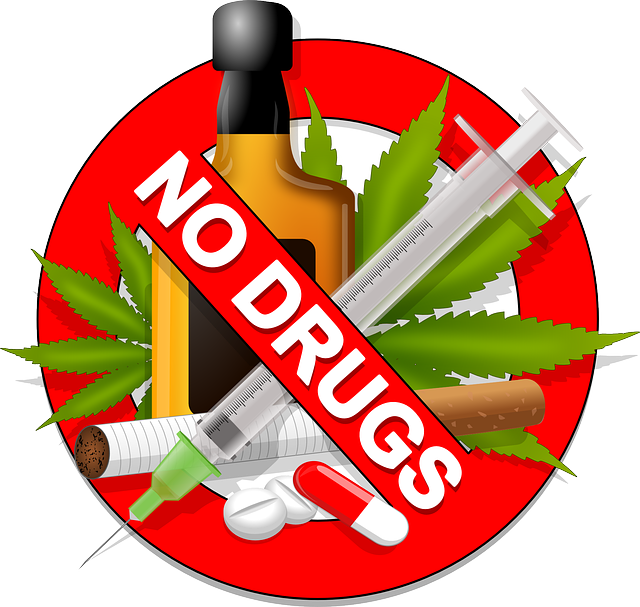A drug-free workplace policy is a crucial component of maintaining a safe, productive, and professional work environment. With substance abuse affecting employee performance, safety, and overall workplace morale, many organizations implement strict policies to prevent drug use on the job. These policies help companies comply with federal and state regulations while promoting a culture of health and accountability.
Let’s explore the importance of a drug-free workplace policy, key components of an effective policy, legal considerations, and best practices for implementation.

Why a Drug-Free Workplace Policy is Important
1. Enhancing Workplace Safety
Substance abuse can impair an employee’s cognitive and physical abilities, increasing the likelihood of workplace accidents. This is particularly critical in industries such as construction, manufacturing, and transportation, where precision and attentiveness are required to prevent injuries and fatalities¹.
2. Improving Employee Productivity
Drug use is linked to absenteeism, reduced productivity, and high turnover rates. Employees struggling with substance abuse may experience difficulty concentrating, increased mistakes, and decreased motivation². A well-enforced drug-free workplace policy helps maintain high performance levels and reduces the financial burden of lost productivity.
3. Reducing Legal and Liability Risks
Employers can be held liable for workplace accidents caused by drug-impaired employees. Implementing a drug-free workplace policy ensures compliance with federal and state regulations, reducing potential legal consequences and liability claims³.
4. Enhancing Workplace Morale
A drug-free environment fosters professionalism and trust among employees. It ensures that all team members feel safe and valued, contributing to a positive workplace culture⁴.
Key Components of a Drug-Free Workplace Policy
An effective drug-free workplace policy should include the following elements:
1. Clear Statement of Purpose
The policy should begin with a clear declaration of the organization’s commitment to maintaining a drug-free workplace and explain its importance in protecting employees and customers³.
2. Prohibited Substances and Behaviors
Employers must specify which substances are prohibited, including illegal drugs, alcohol, and the misuse of prescription medications. The policy should also outline behaviors that violate the policy, such as possession, distribution, or use of drugs on company premises¹.
3. Drug Testing Procedures
A comprehensive drug-free workplace policy should outline the circumstances under which drug testing will occur, such as:
- Pre-employment screening – Testing prospective employees before hiring.
- Random drug testing – Conducting unannounced tests to deter drug use.
- Post-accident testing – Testing employees involved in workplace accidents.
- Reasonable suspicion testing – Testing employees who exhibit signs of impairment.
Testing methods should be clearly defined, including urine, saliva, hair, or blood testing².
4. Disciplinary Actions
Employers should specify the consequences of violating the drug-free workplace policy, which may include:
- Suspension or termination
- Mandatory rehabilitation programs
- Legal action if criminal activities are involved
Having clear guidelines ensures fairness and consistency when addressing violations⁵.
5. Employee Assistance Programs (EAPs)
A drug-free workplace policy should offer support for employees struggling with substance abuse. Employee Assistance Programs (EAPs) provide confidential counseling, treatment referrals, and rehabilitation services⁴.
6. Employee Education and Training
Employers should provide training programs to educate employees on:
- The dangers of drug and alcohol use in the workplace.
- The company’s drug-free policy and expectations.
- The resources available for those seeking help².
Supervisors should receive training on identifying signs of substance abuse and the appropriate steps for intervention³.
Legal Considerations for a Drug-Free Workplace Policy
1. Compliance with Federal Laws
Employers must ensure their policies comply with federal regulations, including:
- The Drug-Free Workplace Act of 1988 – Requires federal contractors and grant recipients to implement drug-free workplace policies³.
- The Americans with Disabilities Act (ADA) – Protects employees in recovery from discrimination but does not shield current illegal drug users⁵.
- The Occupational Safety and Health Administration (OSHA) – Ensures workplace safety, which may include provisions related to substance use¹.
2. State and Local Laws
Laws governing workplace drug policies vary by state. Some states have legalized medical or recreational marijuana, impacting drug testing policies. Employers must stay updated on local regulations to avoid legal challenges⁶.
3. Privacy Considerations
Drug testing must comply with employee privacy rights. Employers should ensure that testing is conducted in a manner that respects confidentiality and follows proper procedures⁵.
Best Practices for Implementing a Drug-Free Workplace Policy
1. Develop a Written Policy
A written policy serves as a legal document outlining the company’s stance on drug use. It should be:
- Clear and concise.
- Reviewed by legal professionals to ensure compliance.
- Communicated to all employees⁴.
2. Gain Employee Buy-In
A policy is more effective when employees understand and support it. Employers should:
- Explain the benefits of a drug-free workplace.
- Offer open discussions to address concerns.
- Ensure transparency in enforcement policies³.
3. Conduct Fair and Consistent Drug Testing
To maintain credibility, drug testing should be unbiased and uniformly applied. Employers should:
- Use certified drug-testing laboratories.
- Ensure fair and consistent disciplinary actions.
- Provide employees with a chance to challenge false-positive results².
4. Offer Rehabilitation Support
Instead of immediately terminating employees who test positive, companies should:
- Provide access to Employee Assistance Programs (EAPs).
- Offer treatment referrals and counseling.
- Allow employees to return to work after completing rehabilitation⁶.
5. Regularly Review and Update the Policy
Workplace drug policies should evolve with changes in laws, workplace dynamics, and substance use trends. Employers should:
- Conduct annual policy reviews.
- Adapt to new legal developments and emerging drugs.
- Seek employee feedback to improve policy effectiveness⁵.
Challenges of Enforcing a Drug-Free Workplace Policy
1. Addressing Marijuana Legalization
With medical and recreational marijuana legalization increasing, employers face challenges in defining workplace policies. While federal law still classifies marijuana as illegal, state laws differ, requiring employers to carefully navigate policy enforcement³.
2. Employee Resistance
Some employees may view random drug testing as invasive, leading to resistance. Transparent communication and education about the importance of a drug-free workplace can mitigate pushback⁴.
3. Balancing Discipline and Support
Employers must balance strict enforcement with providing support for employees struggling with addiction. Offering rehabilitation options alongside disciplinary measures is key to a successful drug-free workplace program⁶.
Conclusion
A well-structured drug-free workplace policy is essential for ensuring safety, productivity, and legal compliance. By implementing clear guidelines, fair drug testing, employee education, and rehabilitation support, businesses can create a healthier work environment while minimizing legal and financial risks.
Employers must remain adaptable, updating policies to reflect legal changes and evolving workplace needs. With a balanced approach that includes strict enforcement and employee support, organizations can successfully maintain a drug-free workplace culture.
References
- National Institute on Drug Abuse (NIDA). (2022). The Impact of Substance Use on Workplace Safety and Productivity. Retrieved from: https://www.drugabuse.gov/workplace-safety
- Substance Abuse and Mental Health Services Administration (SAMHSA). (2023). Drug-Free Workplace Programs: Best Practices. Retrieved from: https://www.samhsa.gov/workplace
- U.S. Department of Labor. (2023). Guidelines for a Drug-Free Workplace. Retrieved from: https://www.dol.gov/drugfree
- Occupational Safety and Health Administration (OSHA). (2022). Employer Responsibilities for Workplace Safety. Retrieved from: https://www.osha.gov/workplace-safety
- National Safety Council (NSC). (2023). The Costs of Workplace Drug Use and Prevention Strategies. Retrieved from: https://www.nsc.org/workplace-drug-prevention
- U.S. Drug Enforcement Administration (DEA). (2023). Drug Abuse in the Workplace: Risks and Prevention Strategies. Retrieved from: https://www.dea.gov/workplace-drug-abuse











